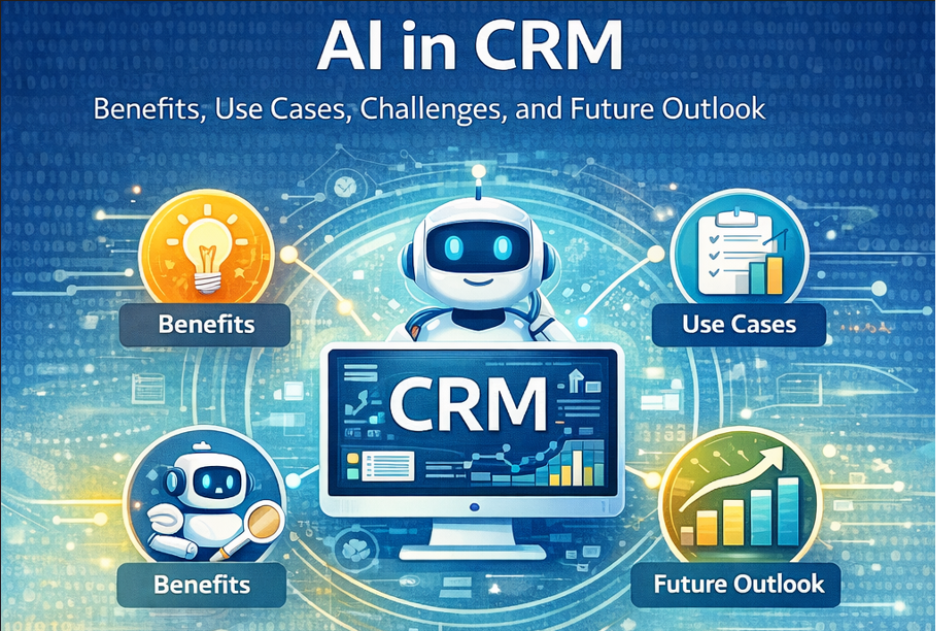Customer relationship management software is one of the most common tools for boosting marketing efficiency and improving customer experience. While this tool is exceptional for marketing purposes, there’s software that you can build on top of it to further enhance such processes.
The concept of tech stacks is important for businesses, and it’s been used in a number of different industries. While the term is predominantly mentioned in the context of software development, there are a lot of benefits you can experience once you pair it with your CRM tool.
If you’re a marketing expert or a decision-maker in a business, you can harvest the benefits of having a strong tech stack on top of your CRM workflow. By having a deep understanding of what tools are best paired with CRM tools, you can further boost your marketing efforts. As you are already aware of the concept “What is CRM” now, let us introduce you to the Tech stack.
Tech stack explained
Before you delve into more complex principles of pairing tech stack with CRM workflows, it’s important that you understand the basics of what a tech stack is. A tech stack is a combination of software, tools, and technologies that are paired in order to improve a certain process.
According to a guide by Vertice, a tech stack is created in order to develop an application or website or to simply manage or boost a process. A common tech stack used for developing web applications is LAMP.
L stands for Linux, which is an operating system commonly used for servers, A refers to Apache web server, M stands for the MySQL database, and PHP a programming language is used for the development of the web application itself.
Together, this tech stack is used for a number of web apps on the internet, and the most skillful developers have knowledge of each of the parts. However, there aren’t any reasons why the principle of a tech stack shouldn’t be used in the context of marketing, SEO, or game development.
A tech stack for marketing, which is a topic for this article, includes tools that provide features for customer interactions, data management, sales, and marketing operations.
All of these processes, or at least some. can be achieved through a combination of CRM platforms, analytics tools, communication apps, and marketing automation software.
Examples of great tech stacks
Of course, we can always talk about tech stacks used for web or software development, like the previously mentioned LAMP. However, our goal is to explain the importance of tech stacks paired with CRM software.
One of the most prominent CRM platforms there is Salesforce. While this tool can provide a lot of CRM functionalities, it doesn’t offer everything a company may need. Pairing Salesforce with Zapier can make your campaigns effective without much human interference.
Zapier is an automation tool that can make you carefree by automating a number of your marketing and personal processes. For example, I’ve used Zapier to automate my personal calendar, alleviating time-management stressors.
But a combination of two tools can’t be called a tech stack without a third. If you put Slack on top of this, your marketing department has covered all the marketing, automation, and communication needs.
Another great tech stack is HubSpot + Zoom + Google Analytics. HubSpot is a CRM preferred by many marketing experts, while Zoom serves as a communication tool, just like Slack in the previous example.
While HubSpot features ensure flawless marketing processes, Zoom streamlines communication between the marketing team, and Google Analytics serves as a way to measure your campaign’s success.
The best example for a CRM tech stack is Suite CRM + Mailchimp + Trello. Suite CRM is one of the few unique open-source CRM platforms. This means that Suite CRM can be customized and built upon, allowing you to specialize your CRM processes.
Don’t get me wrong, Suite CRM isn’t included in the form of a development stack like LAMP. You won’t have to develop everything yourself, but you’ll get all the CRM features you need, as well as the freedom to include other plugins and integrations as you please.
Paired with Suite CRM, you’ll have Mailchimp for your communication and outreach needs and Trello for overall project management goals and processes.
CRM Workflow insights
Understanding what CRM workflow is is another important part of creating an efficient tech stack. CRM workflows are a series of tasks and processes that help businesses manage their interactions with customers and clients
The goal of these workflows is to track leads, manage processes related to customers, and ensure that the efforts of your marketing teams are in sync.
A well-structured CRM workflow includes:
- Lead generation and nurturing
- Data collection and tracking
- Customer communication and follow-ups
- Data analytics tools
Without implementing a proper tech stack, you’re risking that your marketing teams will have double work, human error, and inefficient processes. However, an efficient tech stack solves the mentioned problems and provides a number of benefits on top.
Benefits of a strong tech stack for CRM workflows
If you aren’t yet convinced of the benefits of combining your CRM with a set of other tools, you’ll find some of the key benefits below.
Of course, the implementation of multiple tools isn’t cheap, nor does it offer immediate success. One of the major risks of having a tech stack is causing SaaS sprawl and/or shadow IT, but the potential benefits far outweigh the cons.
Increased efficiency
No CRM tool can be the jack of all trades. This is why it’s important to find the weak points in the CRM of your choice and make up for them with your tech stack. While a tool X can be great for social media marketing, which is your primary focus, it can lack email marketing features that are also important for your business.
With a tech stack that encompasses all of your communication, marketing, and lead generation needs, you’ll be able to run efficient marketing campaigns. Similarly, you won’t have to do double work if you automatize your workflow with tools such as Zapier.
For example, once you create an email marketing campaign on your CRM, an automation tool will send a Slack message to all the team members who are involved in marketing.
Improved customer experience
Customers don’t want to wait and have ambiguities in their experience. CRM tools are exceptional at minimizing barriers, but they aren’t perfect. A tech stack that ensures personalization and provides swift support can significantly impact customer experience.
With an integrated tech stack, businesses can react to customer’s needs and desires swiftly. In this context, a tech stack is intended to make the customer experience more streamlined and personalized.
Data-Driven decision making
CRM tools provide your marketing team with a lot of important data and information. However, some tools simply don’t have the power to give you all the data that a marketing team might need.
For example, you use your CRM to handle marketing metrics, yet it’s totally impossible to track your SEO metrics with it. To make up for this flaw, you pair the CRM with Google Analytics, such as through Google Analytics integration with Salesforce, allowing you to get better insights into queries and traffic for each page.
Once you get all of this data, you’ll be able to make better marketing decisions as an overseer of the marketing campaigns.
Scalability
All companies intend to grow in the future. A single tool can rarely, if ever, satisfy the requirements that corporations have for marketing endeavors. Combining multiple tools can provide you with the necessary insights and process management features.
A CRM tool can rarely satisfy the capacities that growing companies have in different fields. By having a CRM that is supposed to cover multiple responsibilities, you can stunt your growth as a business in the long run.
Instead, you should plan on implementing a number of tools that will satisfy the diverse growth across different departments.
A strong tech stack can transform your Marketing.
Regardless of whether you’re a SaaS management platform, a recruitment agency, or an eCommerce store, having CRM can significantly boost your sales and overall profits. However, you should also understand all the different benefits that different tech tools can give you when paired with CRM software.
There are numerous examples of tech stacks complementing CRM workflows, but you must walk the thin line between causing SaaS sprawl and getting extra profit. Like with any other tool, method, or structure, you won’t experience a 360-degree turn for your business.
But if you’re already successful, you can make your marketing efforts even more successful, attract more clients, and make overall better decisions.



